How to Make Perfect Homemade Pancakes in 7 Easy Steps
It took me a long time to perfect the art of pancake making, because the process is surprisingly tricky. If you don't use the right tools, or you overwork the batter, or your skillet isn't hot enough, you're more likely to end up with pancakes that are thin and flimsy instead of tall and tender like they should be.
I've made a lot of so-so pancakes in my life because no one ever gave me the advice I'm about to give you. Once I did a bit of digging on my own and found out what makes the breakfast fave tick, my pancakes instantly became fluffier and tastier—not to mention way more Instagrammable.
Here's how you can make your best pancakes ever, using what I've learned from years of trying and failing, plus input from an actual pancake-making expert. With a few tricks and a simple formula, you'll be able to make a perfect stack out of almost any ingredients you have around.
1. Grab a griddle or large nonstick skillet.
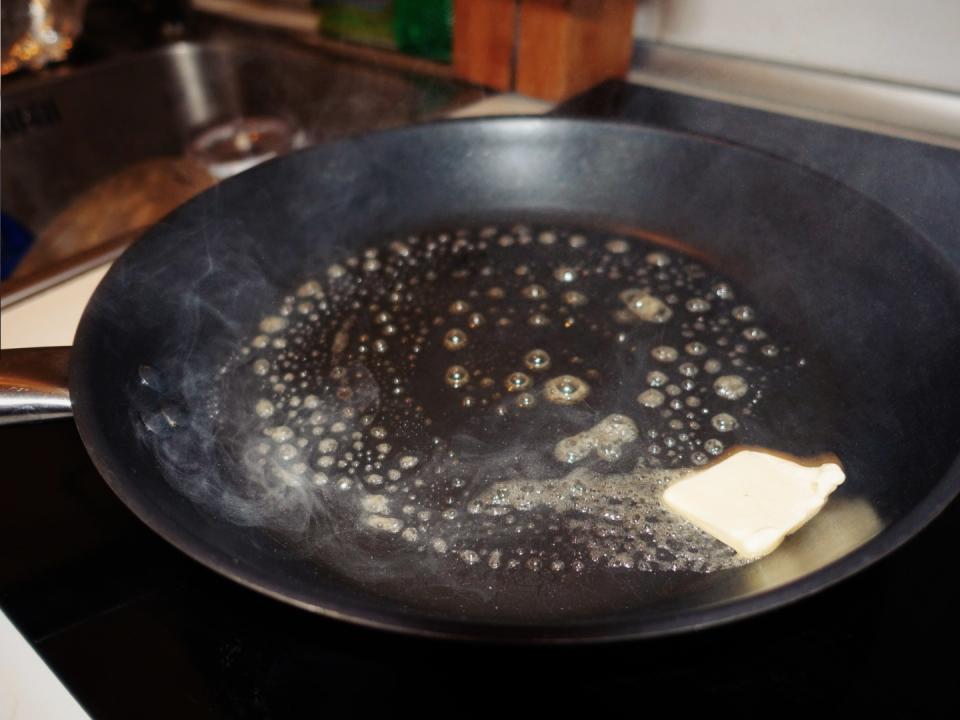
The secret to a perfect pancake is all in the flip, and flipping is easier to do on something like a griddle, which is totally flat and has a large, forgiving surface area. According to Neil Kleinberg, chef and owner of beloved NYC pancake spot Clinton St. Baking Co., that's what makes it the best tool for the job.
If you don't have a griddle and don't feel like investing in one to satisfy your pancake cravings, you don't have to. Feel free to use a pan or a skillet with a surface area large enough to flip your pancakes on. A nonstick surface will help ensure a smooth flip, though you'll still want to grease your pan either way. Which brings me to...
2. Preheat and lightly grease your pan.
If you start your pancake on a cold pan, you are not setting yourself up for success. Pancake batter needs quick, instant heat to properly rise and develop a perfect brown color. For best results, Kleinberg says you should cook over medium heat. Coat the bottom of the pan with a fat source like butter or vegetable oil. I personally prefer to use butter because I've noticed that it helps form the beautiful brown rings you can see in the picture below.
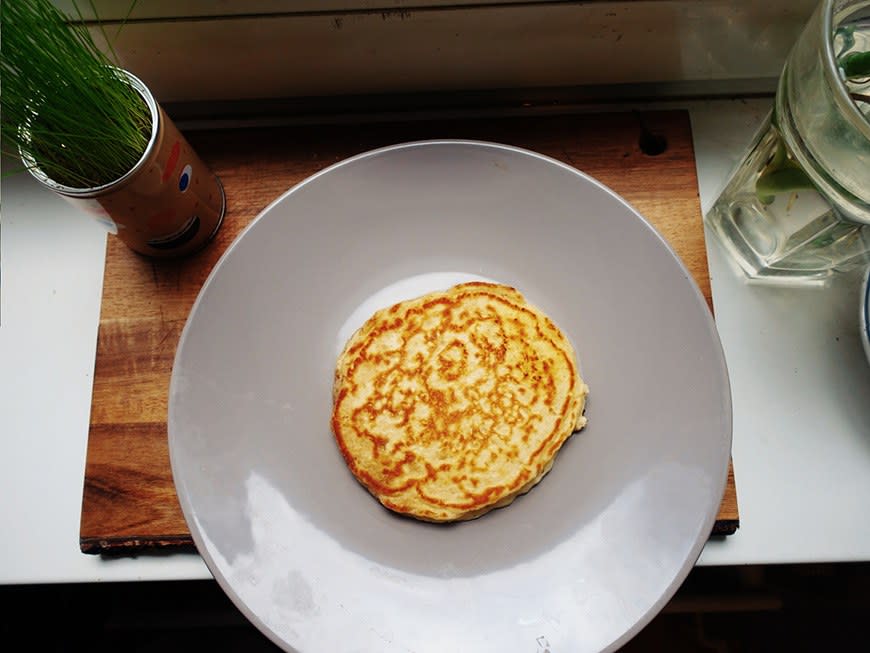
3. Use a simple ratio to make batter.
As all of the thousands of pancake recipes on the Internet prove, you can make the breakfast food with just about anything. Just be sure to follow a ratio of 1 cup of wet ingredients to 1 cup of dry ingredients, says Kleinberg.
Wet ingredients can include things like eggs, dairy products like milk, cream, melted butter, or yogurt, and nondairy alternatives like oat or soymilk, Kleinberg says. Dry ingredients include flour, salt, baking powder, and any spices you want to include. And you should always use 2 teaspoons of baking powder for every cup of flour to ensure your pancakes rise properly.
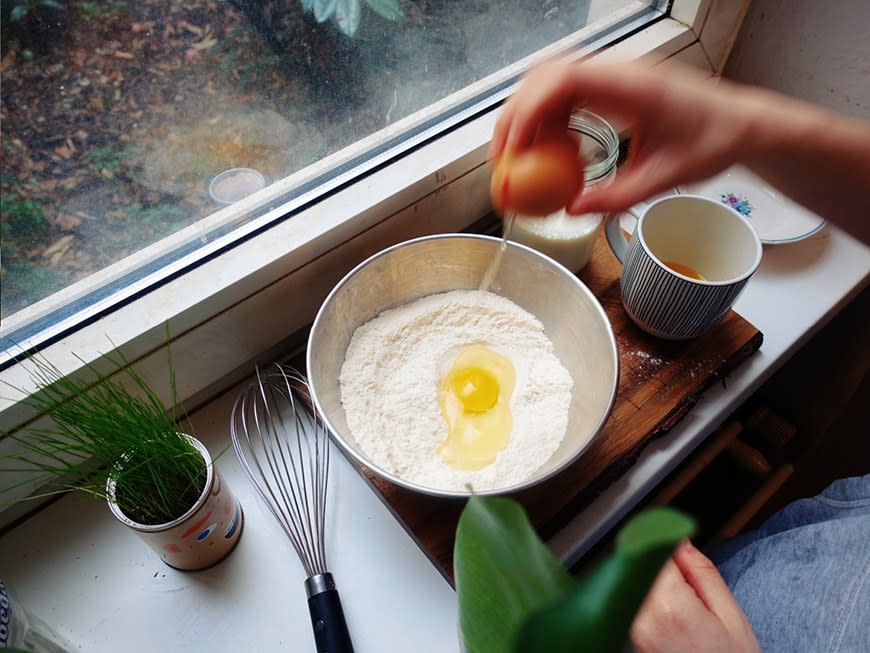
You'll also want to make sure to include a fat source in your batter, because that will help keep the dough tender. Luckily most of the wet ingredients—like melted butter, milk, and eggs—also double as fat sources, so you'll be good to go as long as you include them in some measure. For dairy-free and vegan alternatives, sub in coconut or vegetable oil.
I used Kleinberg's suggestions to whip up my own recipe:
2 cups flour
1 teaspoon salt
1 1/2 tablespoons baking powder
1/4 cup melted butter
1 egg
1 1/2 cups milk
This gave me a batch of seven really fluffy pancakes. Alternatively, you can use your favorite boxed pancake mix if you'd prefer.
4. Don't overbeat the batter.
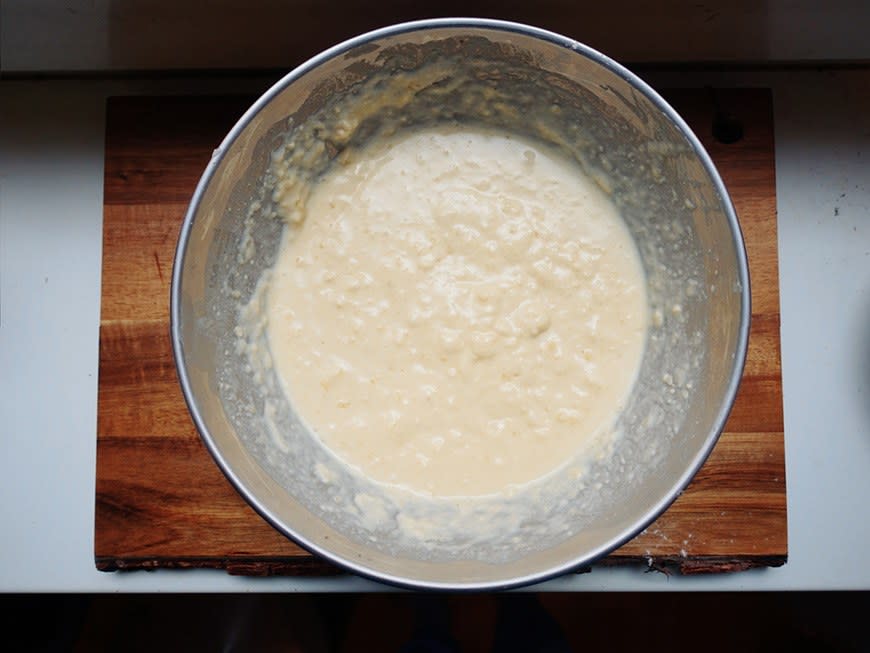
Kleinberg says a good pancake batter will look lumpy and have the consistency of cottage cheese. The more you work it the flatter and tougher the pancakes will end up being. Gently mix the ingredients together—you'll know you're done when the flour is fully incorporated and you can't see it anymore.
5. Cook each pancake until bubbles form on top.
Spoon batter for each pancake into the pre-heated pan with a ladle. If you don't have one, you can also use a measuring cup, or simply pour from the mixing bowl if you're feeling really confident.
Kleinberg says that each pancake will need about one to three minutes before bubbles begin to form and it's ready to flip.
6. Add toppings before you flip.
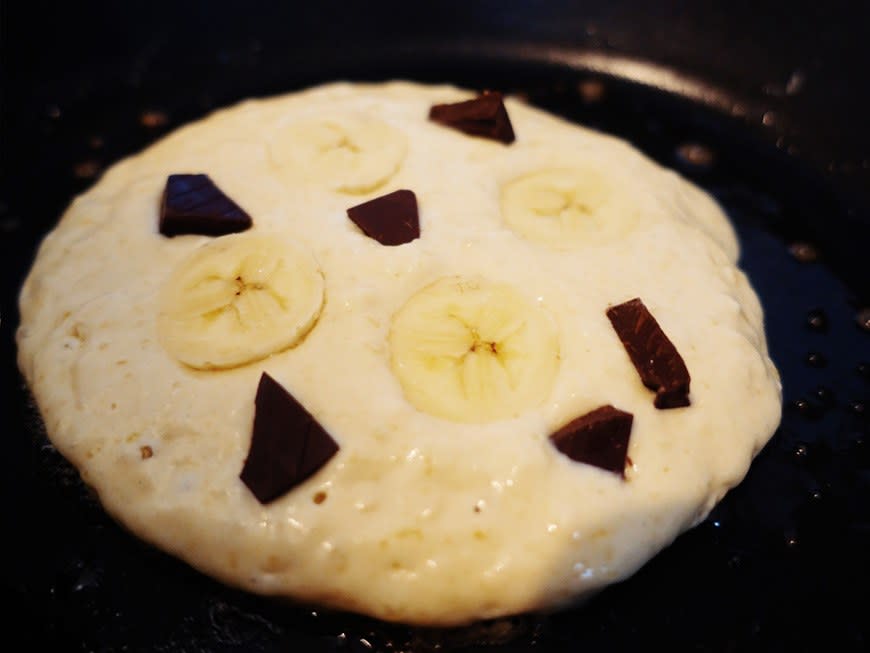
If you want to add toppings, Kleinberg says its best to do it straight into each pancake before you flip it. Whether you're using fruit, nuts, or chocolate, this method will always yield the best results.
7. Flip and let cook for another minute.
When a pancake is ready, tuck your spatula completely under it so it's fully supported when you lift. This will help prevent it from breaking. Don't spend too much time thinking about the flip, though—just do it! If you mess up, it's really no big deal. Practice makes perfect and at least you can still eat your mistake in this case.
As you finish your pancakes, transfer them to a parchment paper-lined baking sheet and set them in a 300-degree oven while you continue cooking. That way they'll taste just as fresh and warm by the time you sit down to eat them.
Related:

